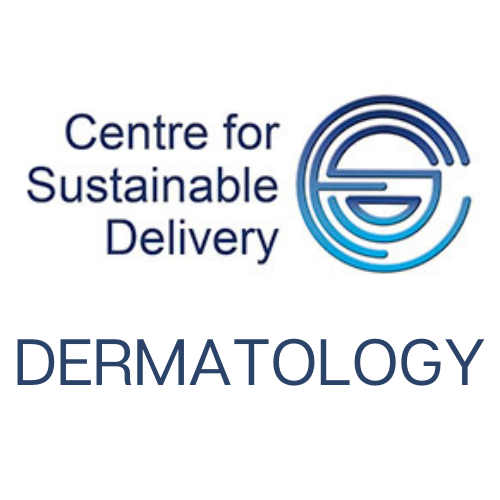Mild: flat, pink patch with slight scale or rough to touch
- Advise all patients on use of sun protection and emollients.
For lesion and field treatment for isolated or scattered AK with no suspicious features:
- Topical Fluorouracil 5% (Efudix) cream apply BD for 3-4 weeks.
- Actikerall (0.5% 5FU/10% salicylic acid solution) apply once daily for 6-12 weeks, useful for hyperkeratotic AKs.
- Imiquimod cream 5% applied 3 x weekly for 4 weeks or 3.75% cream applied od for 2 weeks repeated after 2 weeks.
- Diclofenac sodium (Solaraze) apply BD for 60-90 days.
Counsel patient regarding side effects of chosen treatment
Moderate: larger numbers of moderately thick keratotic red patches that are easily felt and seen
- Advise all patients on use of sun protection and emollients.
- Topical Fluorouracil 5% (Efudix) cream apply BD for 3-4 weeks.
- Imiquimod cream 5% applied 3 x weekly for 4 weeks or 3.75% cream applied od for 2 weeks repeated after 2 weeks.
- Actikerall (0.5% 5FU/10% salicylic acid solution) apply once daily for 6-12 weeks, useful for hyperkeratotic AKs
- Tirbanibulin (Klysiri) applied once daily for 5 consecutive days.
- Counsel patient regarding side effects of chosen treatment
- Cryotherapy for isolated hypertrophic lesions.
- Curettage or shave excision with histology sent for confirmation of diagnosis and to rule out early SCC.
- Surgical excision for individual keratoses that are symptomatic or have a thick hard surface scale.
- Photodynamic therapy [PDT] (refer to secondary care service) test
Severe: Any of the following high-risk factors: Thick AK with indurated base, growing rapidly, tender bleeding, ulcerating
- Advise all patients on use of sun protection and emollients.
- Rapid growth, an indurated base, ulceration (in the absence of topical therapy) could suggest SCC rather than AK. Topical treatment should only be commenced with specialist advice.
